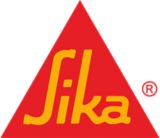Rigid bonding is a traditional bonding method where adhesive is applied to the surface of substrates that are then pressed together, and after time the two objects are strong and rigidly fixed. The adhesive layer between the objects is thin and hard. Load, stress and movement are transferred directly. Rigid bonding is recommended when bonding very similar materials that are not subjected to cyclic stress.
For example: bonding precast concrete panels, anchoring steel plates, joining new to old concrete, or installing fixings for structural strengthening.
At Sika, our Sikadur® range and AnchorFix® products cover a wide spectrum of rigid bonding needs — from ultra-high-strength structural adhesives to practical anchoring solutions for fixing and refurbishing concrete, masonry, steel and composite materials.
Want to know more about fixing and rigid bonding?
A stiff bond for load transfer
Combination of several elements with non-moving, stiff joints is important in various projects:
- Precast concrete parts
- Connection of different construction materials
- Application of strengthening systems
- Structural additions such as rails and curbstones
One range for many substrates
The Sikadur® range covers adhesives, epoxy mortars and bonding bridges for various substrates:
- Hardened, green and fresh concrete
- Masonry and natural stone
- Steel and other metals
- Wood
- Fiber-reinforced polymer (FRP) materials
Why Choose Sika’s Rigid Bonding?
Engineered for structural load transfer – These adhesives are designed to create ultra-strong bonds where load must travel through the adhesive connection, not simply along it.
Durable and built to last – With high resistance to fatigue, vibration and environmental exposure, these systems are suitable for demanding structural use.
Ideal for retrofit and strengthening – Perfect for connecting new elements, extending existing structures or implementing reinforcement systems without full demolition.
Versatile application – Whether you’re working vertical, horizontal, overhead, or in confined spaces, Sika’s range offers suitable options.
Wide substrate compatibility – Hardened, green or fresh concrete; masonry; steel; glass-fibre or carbon-fibre reinforcement; and more.
Global trust & track-record – From bridges and tunnels to car parks and commercial buildings, Sika rigid bonding solutions are specified worldwide.
Typical Applications
Concrete elements
Sika provides a range of special epoxy adhesives for bonding large scale concrete segments during segmental bridge construction work. Other applications for bonding concrete elements with Sikadur® adhesives are important in areas including roofs, concrete pipes, retaining walls, tanks and more.
Steel, carbon fiber and glass fiber elements
Sikadur® epoxy adhesives have been widely used since the 1960’s to bond steel plates on concrete structures. These special adhesives are also used to bond new or replacement parts and components onto concrete structures, as well as composite sections based on glass or carbon fiber.
New concrete and repair
In addition to adhesives for structural bonding of various substrates, Sika also offers bonding bridges for the connection of old and new concrete, as well as epoxy based mortars for fast repairs.
Application Examples
Structural Strengthening Resins
Sika’s Structural Strengthening Resins are high-performance epoxy systems designed to bond, anchor, and reinforce critical structural elements. These products form the backbone of many structural strengthening, repair, and retrofitting systems, ensuring long-term safety and performance under demanding loads.
Together, these products form part of Sika’s comprehensive range for structural strengthening and rigid bonding, delivering dependable performance for bridges, buildings, tunnels, and infrastructure projects worldwide.
Rigid Bonding
Sika’s Rigid Bonding Systems are high-strength epoxy adhesives and anchoring solutions designed for durable, load-bearing connections between concrete, steel, stone, and other construction materials.
They provide excellent adhesion, dimensional stability, and mechanical strength, making them ideal for structural bonding, fixing, and repair applications — even in challenging site or weather conditions.

